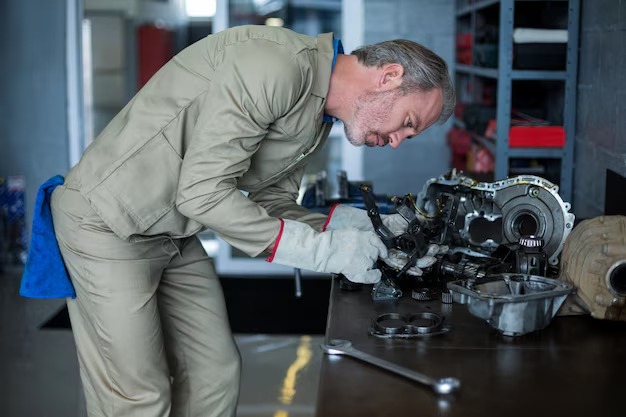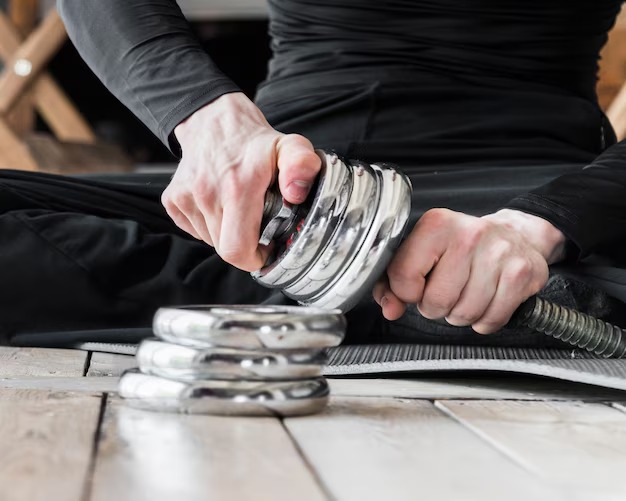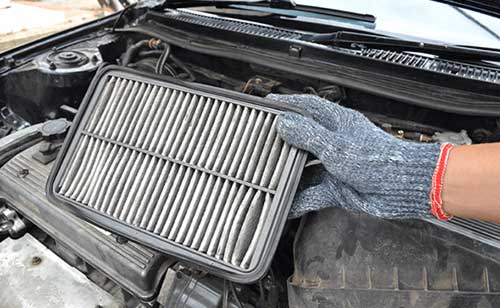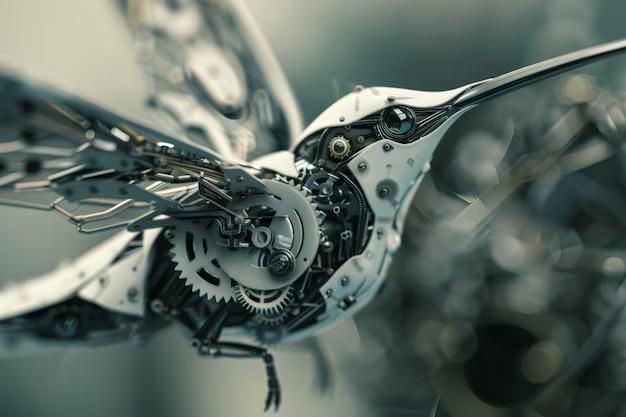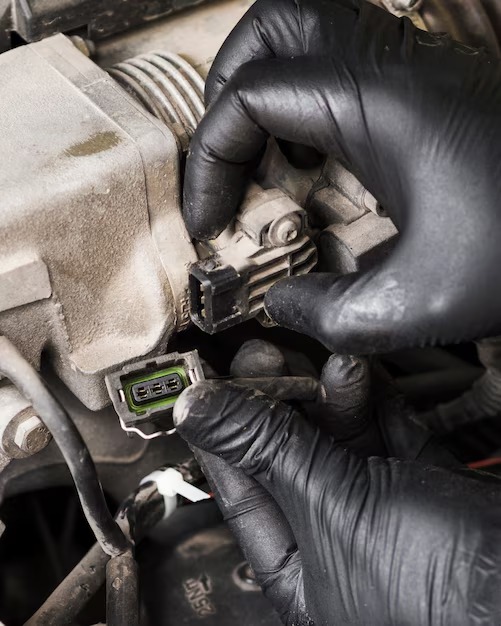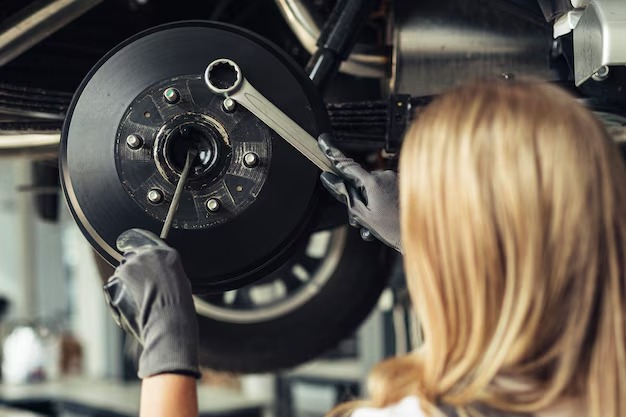Delving Into the World of Kit Cars: A Comprehensive Guide to Do-It-Yourself Automobiles
Stepping into the fascinating universe of kit cars might seem daunting at first glance; however, arming oneself with the right knowledge simplifies the task tremendously. This comprehensive article is designed to elucidate the intricate aspects of craftsmanship associated with assembling automobiles by oneself and its numerous rewarding aspects.
The growing popularity of DIY automobiles is a testament to the thrill and satisfaction derived from creating a personalized machine from the ground up. From the decision-making process surrounding the selection of parts and components to the actual execution, every step is charged with a distinctive zest that any car enthusiast can deeply appreciate.
The potential of kit cars goes beyond crafting a personalized means of transportation—it also unlocks opportunities for unlimited creativity, cost-management, and an unparalleled understanding of automobile mechanics. Whether you’re a seasoned mechanic or an ambitious beginner, our in-depth guide will equip you with the necessary knowledge to embark on this exciting DIY adventure.
Let’s dive headlong into this comprehensive exploration of kit cars, uncovering their history, the different categories available in the market for varying skill levels, the legal aspects, and most importantly, the step-by-step assembly process.
Prepare yourself for a thrilling autospace journey into the infinite realm of kit cars!
Tracing the Origins and Evolution of Do-It-Yourself Automobiles
The Inception of Self-Assembled Cars
In the sphere of automobile manufacturing, the concept of self-assembled or do-it-yourself automobiles, commonly known as kit cars, has an interesting and rich history. The origins of kit cars date back to the dawn of the motoring age. At a time when cars were still a luxury, many enthusiasts sought affordable alternatives, leading to the birth of these easy-to-assemble vehicles. The earliest kit cars were simple, often consisting of a chassis, engine, and rudimentary body elements that the owner could assemble at home.
Kit Car Boom in Post War Era
Following World War II, a resurgence in the popularity of kit cars was witnessed. The war had led to an abundance of affordable surplus parts including engines, car bodies, and wheels. This, coupled with the economic boom and increased free time, resulted in a golden era for kit cars. People started to build their own personal cars, sparking a creative revolution in the automotive industry. The 1950s and 1960s can be considered the golden age of kit cars, with numerous small manufacturers offering a plethora of choices for car enthusiasts.
Modern Developments and Future Trends
Kit car manufacturing took a new turn with the advent of newer technologies. High performance and luxury kit cars started to emerge, appealing to the discerning tastes of modern car enthusiasts. Today’s kit cars have evolved significantly from their rudimentary counterparts. From replicating classic cars to allowing customization of components, the modern do-it-yourself automobiles offer an intriguing blend of creativity and personalization. While the future of the industry remains unpredictable, one thing is clear: kit cars continue to captivate the hearts of automobile enthusiasts worldwide.
Understanding the Concept of a Kit Car
If you’re fascinated by the world of do-it-yourself automobiles, then chances are you’ve come across the term ‘kit car’. So, what exactly does this phrase denote?
A kit car, also frequently referred to as a ‘component car’, is essentially an automobile that an individual purchases in various parts or ‘kits’, rather than as a fully built and completed vehicle. This vehicle then needs to be assembled manually by the buyer or a professional.
The Thrill of Self-Assembly
The beauty of these self-assembly automobiles lies in the level of customization it offers. Enthusiasts can modify and build their cars exactly to their liking, adding personal touches and features. Not only does this give a unique finish to the car, but it also provides a great sense of achievement to the individual after completing the build.
Diverse Kits to Choose From
There is a wide range of kit car styles available for those looking to embark on this automotive adventure. From vintage replicas to modern sports cars, the options almost seem endless.
- Replica kit cars allow automotive enthusiasts to build their favorite classics from scratch. These include iconic models like the AC Cobra or the Ford GT40.
- Sports car kits are aimed at those who dream of owning a high-performance vehicle but without the hefty price tag. These kits allow builders to create their own roadsters, coupes, or even track-focused race cars.
- Some people prefer to go off the beaten track, quite literally, with off-road kit cars. These tough, rugged vehicles, like dune buggies, are designed to tackle terrains regular cars can’t handle.
In conclusion, a kit car allows you to work on your dream car’s design from the ground up, with the flexibility to personalise it to your tastes and preferences. It is a labor of love that combines creativity, patience, and technical knowledge to create a truly unique vehicle.
Exploring the Variety of Widely Loved Do-It-Yourself Cars
The world of do-it-yourself cars, often known as automobile kit builds, is vast and filled with different varieties catering to diverse interests. The designs range from replicating classics to innovative and experimental designs, often entirely personalized to the builder’s desire. Let’s explore the most commonly preferred types of such self-made automobiles.
The Diverse Universe of Home Assembly Car Builds
One of the choice categories for enthusiasts is Retro Styled builds. These kits are designed to resemble the classic cars of the bygone era, giving the builder the satisfaction of owning a vintage car at a fraction of the cost. Cars such as the Shelby Cobra and the Lotus 7 are popular models within this category.
Secondly, Sports Styled projects are a hit among speed and thrill seekers. They incorporate modern technology with sleek designs, aspiring for cross between aesthetics and performance. Models that resemble the Ariel Atom or the Ultima Evolution are quite popular in this category.
Another significant type in this category is the Off-Road Styled kits. Known for their ruggedness and durability, these vehicles are created to withstand harsh terrains and unpredictable weather conditions. They usually resemble models of Land Rovers or similar off-road vehicles.
Lastly, the Experimental and Unique designs for those who wish to tread off the beaten path. These builds have no prescribed designs or models to replicate and are often subject to the builder’s creativity and experimentation. They range from futuristic designs to kits designed specifically for fuel efficiency or ecological sustainability.
- Retro Styled builds
- Sports Styled projects
- Off-Road Styled kits
- Experimental and Unique designs
In conclusion, the world of DIY automobile construction offers numerous possibilities and caters to broad interest categories. Hence, whether you’re an admirer of the classics, a thrill seeker, an outdoor enthusiast, or an experimental builder, there’s a fitting car kit waiting for you.
The Perks and Drawbacks of Constructing DIY Cars
Do-it-yourself (DIY) car building presents unique challenges and rewards for automobile enthusiasts. The allure of constructing kit cars and the potential to end up with a unique, custom vehicle is incredibly appealing. However, it is important to weigh the benefits against the possible issues that may arise.
Advantages of DIY Car Construction
A strong driver for many to dive into the world of DIY car construction is the cost. Kit cars tend to be significantly cheaper than buying a brand-new car, especially if you opt for a second-hand or ex-demonstration kit. Furthermore, the ability to save on labor costs and the satisfaction gained from constructing vehicles with one’s hands cannot be underestimated.
The second strong advantage is the opportunity to completely customize your vehicle. Every component of the car, from the engine to the interior design, can be tailored to your preferences. This degree of personalization is simply unachievable with factory-built cars.
Disadvantages of Assembling DIY Cars
While there are clear benefits, there are also drawbacks to consider. One of the primary challenges is the requirement of a certain level of mechanical competence. Acquiring the necessary tools, understanding the manual, and ensuring the vehicle is safe to drive requires time and mechanical knowledge. This can make the building process lengthy, and potentially expensive if specialist help is needed.
Contrarily to the immediate availability of a factory-produced car, the completion of a kit car can take months, if not years, depending on the availability of parts and the installer’s expertise. Moreover, depending on where you live, different states and countries have different laws and regulations regarding the legality of kit cars on the road and the criteria they must meet. Thus, understanding and complying with these regulations is essential, adding another layer of complexity to the project.
Overall, DIY car construction offers both excitement and challenges. Understanding the effort, time, and skills required before starting such a project will ensure a smoother and more enjoyable building journey.
Comprehending the World of Do-It-Yourself Auto Manufacturing
The domain of build-it-yourself cars, often known as kit automobiles, is a unique segment in the automotive industry. The business is filled with enthusiasts who enjoy these exciting, component-based vehicles.
Generally, these are specialty vehicles, not the typical automobile you’d come across at a usual automobile dealer. Its buyers are usually the mechanically-adept and adventurous, people who savor the challenge of assembling a car from scratch and customizing it to their liking.
A Snapshot of the Kit Car Sector
The industry isn’t as gigantic as mainstream vehicle manufacturers, but it has a dedicated following. For a substantial number of hobbyists, the pleasure of creating a vehicle from a group of components provides a satisfaction unparalleled by regular car ownership.
You don’t necessarily need to be a mechanical expert to put together a kit car. Numerous companies provide comprehensive manuals with their kits, and there are many resources available online, including forums and communities focused on this very specific niche. Remember, however, that patience, dedication, and a significant time investment are often paramount in completing a kit car project.
Types of Kit Cars
The diversity within the industry is fascinating. The spectrum of available kit cars ranges from replicas of classic cars to modern designs and electric vehicles. Some are sold in ‘complete’ kits which include everything you need to build the vehicle, while ‘component’ kits allow you the flexibility to source some parts independently. The latter route is often chosen by those seeking a high degree of customization in their project.
- Replica Kit Cars: This type involves creating a copy of a car model, often a vintage or classic design, that is no longer in production. The replicated cars range from the iconic Shelby Cobra to the stunning Lamborghini Countach.
- Original Design Kit Cars: These are unique, independent vehicles, devised by the manufacturer and not based on any existing model. They cater to individuals who desire a distinctive and personalized car.
- Component Kit Cars: As the name conjures, these sets do not provide all the elements necessary for the vehicle. This characteristic provides enthusiasts the most creative freedom, as they can procure their own engine, transmission, and various other components.
Understanding the kit automobile industry reveals a vibrant world filled with unique cars and devoted hobbyists. These build-it-yourself vehicles infuse novelty and excitement into the escapade of car ownership.
Vital Implements for Assembling Do-It-Yourself Automobiles
Whether you’re a seasoned mechanic or an enthusiastic beginner eager to put your own personal touch on a new set of wheels, building your own car from a kit can be a rewarding project. However, like any do-it-yourself endeavor, constructing a kit car requires the right tools. Let’s take a look at a basic selection of utensils that are crucial to have on hand when embarking on a kit car creation journey.
List of Crucial Equipment for Constructing Kit Cars
In order to assemble a DIY car, you’ll need an array of tools, ranging from common hand tools to power tools. Being well-prepared before you begin can save you time and effort, and ensure a smooth building process.
- Screwdrivers: A well-stocked set of screwdrivers is must, preferably one that consists of flathead and Phillips types of varying sizes. These will come in handy for a multitude of tasks throughout the assembly process.
- Wrenches: Both combination wrenches, adjustable wrenches and socket sets are essential for tightening and loosening bolts and nuts.
- Pliers: A several types of pliers, including needle nose and slip joint, can be invaluable for gripping small parts or reaching into restricted spaces.
- Wire Cutters and Strippers: These are indispensable tools for any work involving electrical wiring.
- Power Drill: A cordless drill, ideally with a selection of drill bits and screwdriver attachments, is needed for drilling holes and assembling parts.
- Mechanic’s Creeper: This can be a great aid when working underneath the vehicle, especially during tasks like attaching the undercarriage or exhaust system.
It may go without saying, but in addition to these tools, don’t forget safety equipment such as gloves, safety glasses and a good quality first-aid kit. Remember, safety is always paramount when working with tools, on vehicles or operating machinery.
Assembling your very own automobile can be a truly rewarding experience, not just at the end of the project, but throughout each step of the process itself. So, equipped with these essential tools, roll up your sleeves and get ready to build the kit car of your dreams. Happy building!
The Process of Assembling a DIY Motor Vehicle
Venturing into assembling a do-it-yourself (DIY) motor vehicle, also known as a kit car, can be an incredibly rewarding journey. However, it is a meticulous process and caution must be taken every step of the way. Here’s a step-by-step guide to help you make your first kit car a successful project:
1. Procuring the Kit
The first step is selecting and purchasing the right kit. It’s vital to choose a kit car that matches your skill level, budget, and taste. Do your research, read reviews, and compare prices before making a decision.
2. Arranging Your Workspace
Assembling a kit car requires a well-organized workspace. Make sure it’s spacious enough for the car and the various parts. Keep your working area clean and well lit, with all necessary tools within reach.
3. Assembling the Chassis
The chassis forms the base of the car. Typically, the first thing to assemble is the chassis followed by the suspension system. Once done, you’ll have a rolling chassis ready for the next steps.
4. Fitting the Body
Next, the body shell is fitted onto the chassis. Shaping and aligning the body shell can be a bit intricate, so take your time to ensure optimal fitment.
5. Installing the Engine
With the body fitted, it’s time to install the engine. Whether you’re dealing with an easy bolt-in assembly or a complex build, always refer to the instruction manual provided by the kit manufacturer.
6. Wiring and Electronics
Probably the most challenging part of building a kit car is the wiring and electronics installation. Following the wiring diagram supplied in the kit, patiently connect every wire and component as directed.
7. Finalizing the Build
Finally, after installing all the components and double-checking everything, it’s time to fire up the engine for the maiden test drive. Ensure to check all systems and fix any issues before venturing out for a long ride.
Building a kit car is like crafting a sculpture. It requires patience, precision, and a lot of hard work. But in the end, it all pays off when you roll out your very own machinery. Remember, it’s not a race but a journey of learning and satisfaction.
Comparing the Expenses: Constructing Your Own Automotive Project or Purchasing a Brand-New Vehicle
If you’re a car enthusiast with a passion for building and tinkering, a kit car can be an exciting project. However, you may wonder about the financial aspect of this undertaking. Let’s take an inside look at the greenbacks involved in constructing a do-it-yourself car project against purchasing a new, ready-to-drive vehicle straight from the store.
The Monetary Aspects of a DIY Automotive Project
The cost of a kit car varies greatly depending on the model and the choices you make regarding parts and accessories. On the low end, you can find basic kit cars for as little as $10,000, but higher-end models with all the bells and whistles can cost upwards of $50,000. Additional expenses may include the tools and equipment required for assembly, any extra parts you might need, and the cost of any modifications or customizations you wish to make. Keep in mind, though, the labor cost is virtually zero since you’d be building it yourself!
Investing in a Brand-New Vehicle
On the other hand, a new factory-built car costs considerably more upfront. The median price of a new car in the United States is around $36,000. While this price includes everything – engine, chassis, interior, electronics, and labor – it offers little room for customization unless you’re willing to throw in additional money.
The Final Verdict: Cost of Building vs. Buying
When weighing up the costs, it’s clear that a basic kit car can be a more affordable option than a new car. However, don’t forget to consider the priceless joy and satisfaction that comes from constructing your own machine, if you’re the hands-on type. Furthermore, note that a new car comes with warranties and guarantees that you won’t get with a kit car. Therefore, it’s all about what you value most: the uniqueness and self-gratification of a self-built car, or the security and convenience of a new car, both of which come with their own respective price tags.
Getting Your Self-Assembled Vehicle Insured and Registered
As soon as your DIY automobile or kit car is operational, it signifies it has arrived at the time where it needs to be licensed, registered, and insured. While securing all these for traditional vehicles is relatively straightforward, for assembled vehicles, it’s a different ball game altogether. This difference is chiefly due to the set of legal rules, regulations, and procedures that apply to these types of cars.
Protection for Your Home-Built Car
When it comes to insuring self-assembled cars, it is pivotal to note that not every insurance firm provides coverage for such automobiles. Therefore, the first step is to identify a company that offers this type of coverage. You might need to consider specialist companies that offer kit car insurance. It is essential to understand what the policy covers and check if it includes all the specific demands associated with a DIY car. Major aspects to watch out for in insurance include coverage for damage, theft, public liability, and replacement parts. Always ensure that the policy’s value for the car is agreed upon beforehand, eliminating the risk of underinsurance.
Acquiring a License for Your Self-Built Vehicle
Similar to insuring, the process of licensing a DIY car can be more arduous than a conventional vehicle. The procedure and requirements often vary depending on the local Department of Motor Vehicles’ (DMV) specific regulations. However, general steps usually involve:
- Presenting receipts for the main parts purchased for the vehicle. This is to verify you didn’t use stolen parts.
- Undergoing a safety inspection to ensure your car meets the necessary safety standards. For instance, the car may need functioning lights, seat belts, etc.
- For some regions, there might be a need to prove that the car passes emissions tests, ensuring your vehicle doesn’t pollute beyond acceptable thresholds.
Through proper preparation and understanding of the registration process, insuring and licensing your kit car can be a successful undertaking. It’s always beneficial to reach out to DMV or car insurance experts to guide you through the processes and ensure compliance with all regulations.
Guidelines for Keeping Your Self-Assembled Vehicle in Prime Condition
Having a car built from a kit can be an exhilarating project for any automotive enthusiast. You get to assemble every part of the vehicle yourself, ultimately giving you a great sense of satisfaction. However, once the project is completed, you might be worried about how you can best maintain your DIY vehicle. Here are some tips which can help keep your personally built car in best shape:
Regular Cleaning is Essential
Regular cleaning is a fundamental aspect of car maintenance, and it is no different for kit cars. Whether, it’s about ensuring the longevity of your car’s parts or making it visually appealing, cleaning plays an integral role. Dust accumulation can cause wear and tear to your car’s parts over time. Therefore, ensure it’s clean both on the inside and out.
Ongoing Examination
Regular inspections are crucial to keep the self-assembled vehicle smoothly running. This means checking all the essential parts of your car from time to time – engine, brakes, wheels, lights etc. If you come across any unusual sounds, vibrations or leaks, it’s always better to get them checked right away rather than let the problems escalate.
Follow the manufacturer’s guidelines. Never overlook what the components’ maker suggests when it comes to maintenance. From oil changes to tire rotations, always follow the recommended schedule. While it’s okay to vary slightly, never put off these services for too long as it could cause larger issues down the road.
- Invest in quality automotive tools: High quality automotive tools will help you carry out the maintenance tasks efficiently. This will not only save your time, but also prevent any potential damage to your car.
- Store your DIY vehicle correctly: If you are storing your car for long periods of time, make sure you park it in a cool, dry place to protect it from elements. Moreover, don’t forget to disconnect the battery to avoid damage from long-term storage.
Taking care of a kit car may sound challenging, but with a careful and methodical approach, you can keep your car in top-notch condition. Remember, the key to maintaining any car, whether it’s a kit or manufactured one, lies in consistent care and attention.
An Insight into the Passionate World of Assembled Vehicle Admirers
Diving deep into the realm of self-constructed automobiles often leads us to the path of a dedicated community that thrives upon the shared appreciation and love for kit cars. This not-so-secret society of do-it-yourself automobile enthusiasts spans across continents, boasting an alliance of novices and experts who are keen to exchange knowledge, share experiences and promote their passion for this unique aspect of the automotive world.
Remarkable for their shared enthusiasm, the builders and admirers of tailor-made self-assembled cars are known for the high level of expertise, creativity and dedication they bring into their hobby. Every kit car, from a replica of a classic 1964 Shelby Cobra to a custom-made racing beast, is a testament to the skills, vision and perseverance of its designer.
The world of ‘build-your-own’ car aficionados, besides being immensely colourful and technically sound, is also well-known for its spirit of camaraderie and mutual support. This stem from the fact that, despite the inherent joy and satisfaction that crafting a vehicle from a kit brings, it is not devoid of numerous challenges, from sourcing the right parts to painstakingly assembling them into a well-functioning, road-worthy masterpiece.
At the core of every community gathering or online forum exchange, one would witness a steady stream of handy tips, troubleshooting advice, encouragement and inspiring stories that not only foster shared learning but also serve to perpetually fuel their collective passion.
- The technical aspect: Technical knowledge sharing forms a significant part of the discussions in communities of kit car enthusiasts. It’s not unusual to find heated debates over bonding techniques, body panel alignment, or engine tuning in forums or gathering places.
- The experience: Sharing personal experiences, from the ‘eureka’ moments of problem-solving to the thrill of the first drive in the self-assembled car, keeps the unity and the spirit of community thriving.
- The camaraderie: The ups and downs of building your own automotive masterpiece from scratch unite kit car enthusiasts in a unique bond. The community is always ready to lend a hand, share some wisdom or simply join for a road trip in their unique handcrafted automobiles.
With their shared passion, unwavering spirit of camaraderie and impressive technical prowess, the community of built-car devotees serves as a great inspiration for present and potential enthusiasts alike. Their collective saga is a beautiful amalgamation of visionary engineering, DIY tenacity and a shared love for the automobile that goes beyond aesthetics or functionality.
FAQ: What is a kit car
What is a kit car?
A kit car is a type of vehicle that is typically supplied as a set of parts which the buyer assembles into a fully functional car. They’re a popular project among car enthusiasts who want to have a unique vehicle.
Why are kit cars popular among car enthusiasts?
Kit cars are popular because they allow car enthusiasts to build their own vehicle to their own specifications. This often results in a unique, customised vehicle that wouldn’t be readily available on the market. It’s also a challenging and rewarding project for people who enjoy DIY tasks.
What skills do I need to assemble a kit car?
Building a kit car requires a range of skills, including mechanical, electrical, and often some level of fabrication. It’s also helpful to have problem-solving abilities for managing the often complex task of assembling a car from a kit.
Where can you buy a kit car?
Kit cars can be purchased from a variety of vendors across the world. They can often be found online, at car shows, or through specialty retailers. Some companies even specialise in selling kit cars.
What types of kit cars are available?
The types of kit cars available range from designs that replicate classic cars to models that incorporate modern technology for optimal performance. Some popular types include replicas of sports cars, hot rods, and even luxury vehicles.
Can I drive my kit car on public roads?
Once a kit car is completed, it typically has to undergo an inspection process specific to the region or country before it can be registered for road use. Once it passes these inspections and is registered, it can usually be driven on public roads.
Does building a kit car require a lot of space?
Yes, building a kit car will require a decent amount of space as you’ll need to store the parts and have enough room to work on the car. A spacious garage or workshop is usually ideal for this.
How much does a kit car cost?
The cost of a kit car can vary greatly depending on the model you choose, the quality of the parts, and any additional customisation you want. On average, you can expect to pay anywhere from a few thousand to tens of thousands of dollars.
What sets apart a kit car enthusiast community?
A kit car enthusiast community is set apart by their fascination for kit cars, car models that can be assembled at home. They enjoy the process of building cars, share a common passion for unique and custom design vehicles, and often meet at events or in online forums to exchange ideas and knowledge about their hobby.
How can someone become involved in the kit car enthusiast community?
One can start by researching about kit cars and joining online forums or social media groups dedicated to kit cars. Attending car shows or events where kit car enthusiasts gather could also be beneficial. Many communities welcome new members and are more than willing to share information and provide guidance to help get newcomers started on their own kit car projects.
What is Factory Five known for in the automotive industry?
Factory Five is renowned for producing kit cars and providing enthusiasts with the means to build their own vehicles.
What is a donor car in the context of kit cars?
A donor car is an existing vehicle used as a source for various components and parts when building a kit car.
What are some examples of donor cars that people commonly use for kit car projects?
Donor vehicles can include cars like the VW Beetle, Subaru, Mazda Miata, or even Porsche, depending on the kit car maker and model.
What is a complete kit in the world of kit cars?
A complete kit typically includes all the necessary components, parts, and instructions needed to build the car, except for the donor vehicle.
Are kit cars street legal, and what steps are usually involved to make them so?
Kit cars can be made street legal, often requiring specific modifications and inspections, such as the IVA (Individual Vehicle Approval) process in the UK or EPA certificate of conformity in the U.S.
What are some popular kit car manufacturers other than Factory Five?
Popular kit car makers include Caterham, Exomotive Exocet, and MEV (Mini-Elfin Vehicles).
What are some advantages of kit cars, such as those from Factory Five?
Kit cars offer enthusiasts the opportunity to build their dream car, often with lightweight fiberglass bodies and powerful engines like V8s or V6s.
Can you mention some famous kit car models or replicas, like the Shelby Cobra replica?
Examples of well-known kit cars include the Factory Five MK4 Roadster (Shelby Cobra replica) and the Meyers Manx dune buggy.
What distinguishes kit cars from production cars available on the market?
Kit cars are typically assembled by the owner, allowing for customization and personalization, while production cars are mass-produced.
What factors make some kit cars easy to build, appealing to enthusiasts who may not have extensive mechanical experience?
Kit cars designed with simplicity, user-friendly instructions, and pre-engineered running gear can be easier to build for enthusiasts of varying experience levels.


